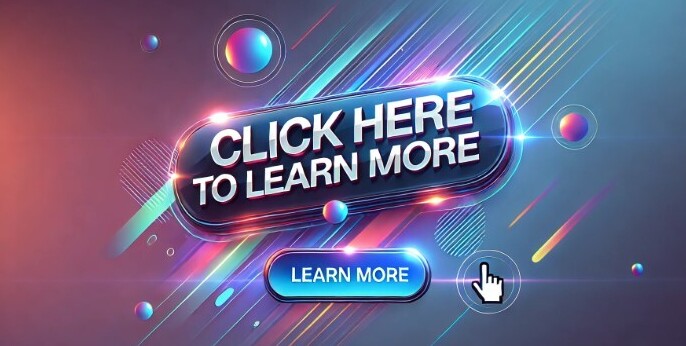
Call-to-action buttons are like the unsung heroes in the world of affiliate marketing. They’re those catchy little lines on websites inviting you to learn more, buy now, or subscribe today.
Think of them as the final nudge that guides a potential customer to take an action that benefits both them and the marketer.
You might not realize it, but these CTAs play a huge role in boosting affiliate conversions. When done right, they guide users right where you want them. It’s like having the perfect script in a conversation with a potential buyer. They help turn that casual browser into a committed buyer.
The key to a killer CTA is all about having a simple yet powerful message. No need to overcomplicate things here. The best ones often boil down to a few straightforward words that pack a punch. They’re like a whisper in your reader’s ear, encouraging them to act without being pushy.
Think about a popular online store. Their CTAs probably include words like “Shop the Look” or “Add to Cart.” Straight to the point, right? That’s what makes them effective. Users know exactly what the next step is without thinking twice.
In this digital age, we’re all about instant gratification. CTAs tap into that by making the path from browsing to buying as smooth and clear as possible. This means catching the eye right when the user is most interested.
It’s not just about the words you use. It’s about making sure your CTAs resonate with what your audience wants at that moment. They answer the user’s “So what?” or “Why should I do this?” questions in the blink of an eye.
Having a CTA is like having a secret weapon in your marketing toolkit. Once you master it, you’re well on your way to elevating your affiliate marketing game to the next level.
Crafting Clear and Direct CTAs
Creating a clear call-to-action is like shining a spotlight on those next steps you want your customers to take. It’s all about clarity and direction. You want your reader to jump into action without any second thoughts.
The secret sauce here is simplicity. A good CTA isn’t buried in jargon or cluttered with fancy words. It’s all about using plain language that anybody can understand. You want to say what you mean and mean what you say. This means less is more. Think “Buy Now” or “Learn More.” Simple? Yes. Effective? Absolutely.
Let’s say you’re running an outdoor gear shop online. Instead of saying something like, “Explore our wide range of climbing equipment today to find what’s suitable for your needs,” keep it tight. Try “Get Climbing Gear.” It’s shorter and gets right to the point.
Don’t worry about being too bold. A call-to-action should be confident, a little like a friendly nudge. You’re inviting someone to check out something they’ll love. Just be sure your CTA tells the reader exactly what to expect. It should leave no room for doubt.
Every word counts in a CTA. Think of it as the sparkle in your marketing message that catches the eye. Sometimes, a simple tweak can make a huge difference. Try experimenting with action words and see what grabs more attention.
At the end of the day, a powerful CTA is more than just its text. It’s a dynamic part of your strategy aimed at guiding potential customers along an effortless path to conversion.
Using Emotional Triggers in CTAs
Emotional triggers can turn a “maybe” into a “yes” by tapping into what the customer feels. It’s about connecting with the heart, not just the mind. People make purchasing decisions based a lot on how they feel, even if they might not realize it.
Think about the excitement of getting a good deal or the satisfaction of finding something unique. A well-crafted call-to-action brings these emotions to the forefront, making people want to click. It’s the difference between just telling someone about your product and inviting them to be a part of an experience.
When you’re crafting CTAs, consider the emotional impact. Words that make folks feel happy, secure, or a little bit curious can really push them toward making that purchase. For example, a phrase like “Discover Your Perfect Adventure” isn’t just telling someone to click—it’s promising an exciting experience.
You’ve probably seen this with limited-time offers. The “Last Chance” or “Only Today” CTAs create a sense of urgency and scarcity. They make the deal feel too good to miss. It’s like tapping into that little voice that says, “I need to act now.”
Empathy also plays a huge role in emotional CTAs. Show your audience you understand their problems or desires. A CTA like “Find Your Fit” on a clothing site speaks directly to the shopper’s wish to find something just right for them.
Using emotions in CTAs isn’t about tricking people. It’s about speaking to them in a language they already understand. Harnessing these feelings can help convert interest into action, leading to more successful affiliate marketing.
Optimizing CTA Placement for Improved Visibility
Where you put your call-to-action matters just as much as what it says. Placement can make or break its effectiveness. It needs to grab attention at just the right moment when the user is ready to take that next step.
Visibility is your best friend here. Your CTA should be easy to find but also feel like a natural part of the user’s journey. A well-placed CTA is like a guiding sign along the way, pointing out the path the user should follow.
One strategy is to position CTAs where the content naturally leads the reader to wonder what’s next. This might be at the end of a blog post, after explaining a product’s benefits, or even right at the top if it’s a special promotion.
Consider using multiple CTAs, but don’t overdo it. Having a primary CTA that’s prominent and a secondary one for those who need a bit more convincing can be a good strategy. They should work together to steer the user in the same direction.
Let’s take a web page as an example. If you’re highlighting a sale, don’t just stick the CTA at the bottom. Include it near compelling images or testimonials that build trust. You want it to feel like a natural progression.
Don’t underestimate the power of contrast in making your CTA pop. It should stand out from the rest of the content in terms of color and size, drawing the eye directly to it.
Testing different placements to see what your audience responds to can also be really helpful. Each website and audience is unique, so what works for one might not work for another.
Strategic placement combined with strong wording ensures your CTAs are not just seen, but also clicked, leading to better conversions and a stronger impact in your affiliate strategy.
Testing and Analyzing CTA Performance
Creating a great call-to-action is just the beginning. To really power up your strategy, you’ve got to know how it’s performing. That’s where testing and analysis come into play.
Regular testing lets you see what’s working and what’s not. A simple way to start is with A/B testing. This involves comparing two versions of your CTA to see which one leads to more clicks or conversions. It’s like trying out different flavors to find the one your audience loves.
Consider experimenting with various elements. Try different wordings, colors, or even positions on the page. For instance, swap out “Get Started” with “Try It Now” and see which one clicks more with your audience. Little changes can have big impacts.
Tracking CTA performance isn’t just for the numbers. It’s a chance to learn more about your audience and what they need. Look at the data to understand where things peak or drop off and adjust accordingly.
You can use tools like Google Analytics or specialized software to measure how your CTAs are doing. Keep an eye on conversion rates, click-through rates, and bounce rates. These metrics tell you if your CTAs are leading users down the intended path.
Don’t shy away from making adjustments based on what you find. It’s about refining, not just testing. CTAs aren’t set in stone, and your audience can change over time. Keeping tabs on their performance ensures you’re always one step ahead.
By continually testing and analyzing, you’re not just improving your CTAs. You’re building a more intuitive and responsive marketing strategy overall.
Adapting CTAs to Different Affiliate Channels
Every affiliate channel has its own vibe, and your call-to-action should match that. Different platforms mean different user behaviors, and tailoring your CTAs can make a world of difference.
If you’re working with social media, your CTAs should be short and catchy. People scroll quickly, so phrases like ‘Shop Now’ or ‘Swipe Up for Deals’ grab attention fast. These action-packed words stop thumbs from scrolling away.
For an email marketing strategy, you might want to be a bit more personal. People open emails expecting something worthwhile. Including CTAs like ‘Claim Your Offer’ or ‘See Your Special Invite’ gives that extra personal touch.
Blogs and websites, on the other hand, offer more room. You might use CTAs that invite engagement, like ‘Join the Conversation’ or ‘Learn the Details Here.’ These are perfect when you can guide readers to more content.
Don’t forget about the power of video content. Here, CTAs should be direct but friendly. Use time-specific cues. For instance, ‘Click to Watch More’ fits nicely into a video’s flow.
The goal is to make the CTA feel like a natural part of the user’s experience on the channel they’re using. Align it with the way people interact with each platform, and you’re more likely to see an increase in conversions.
Adapting CTAs across channels isn’t about reinventing the wheel. It’s about paying attention to the specific quirks and strengths of each platform. This way, your CTAs will be as effective as possible in pushing users toward action.
 ,
,
To learn more about Howard, you can check out this article.
My involvement in operating an online business started in 2014, and I did not do it alone! Online success takes hard work, perseverance, and help to learn all these things.
The industry is constantly changing, especially with the growth of Artificial Intelligence (AI) in the online world.
If you want to be taught how to create great website content and have an online business that could make you income 24/7, 365, then you may want to check out how I did it.
I used this source to learn, engage with others for assistance, and create online income using multiple affiliate marketing sources.
You can also reach out to me by leaving a comment below. I will get back to you!
